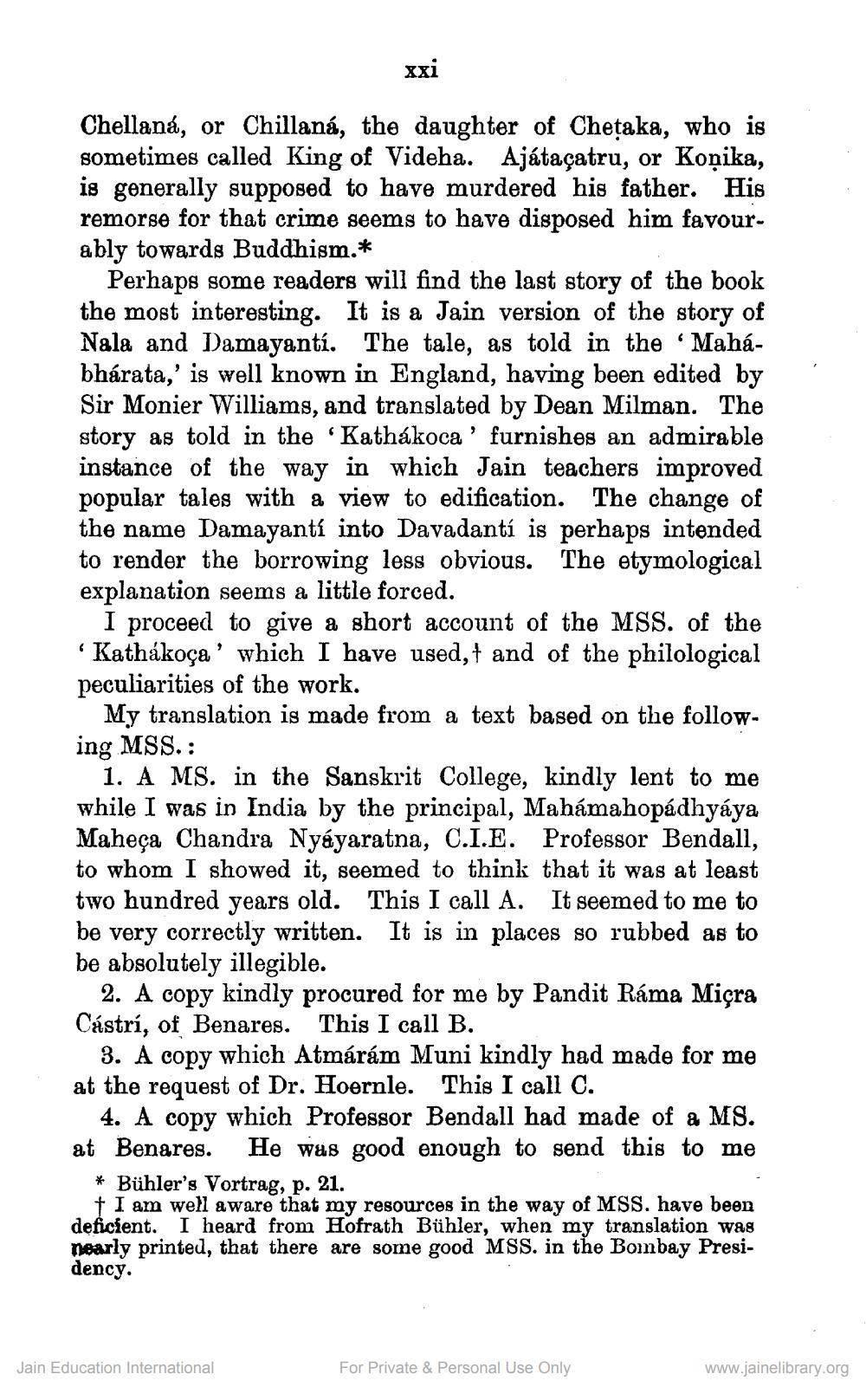________________
xxi
Chellaná, or Chillaná, the daughter of Cheṭaka, who is sometimes called King of Videha. Ajátaçatru, or Konika, is generally supposed to have murdered his father. His remorse for that crime seems to have disposed him favourably towards Buddhism.*
Perhaps some readers will find the last story of the book the most interesting. It is a Jain version of the story of Nala and Damayantí. The tale, as told in the 'Mahábharata,' is well known in England, having been edited by Sir Monier Williams, and translated by Dean Milman. The story as told in the 'Kathákoca' furnishes an admirable instance of the way in which Jain teachers improved popular tales with a view to edification. The change of the name Damayantí into Davadantí is perhaps intended to render the borrowing less obvious. The etymological explanation seems a little forced.
I proceed to give a short account of the MSS. of the 'Kathakoça' which I have used, and of the philological peculiarities of the work.
My translation is made from a text based on the following MSS.:
1. A MS. in the Sanskrit College, kindly lent to me while I was in India by the principal, Mahámahopadhyaya Maheça Chandra Nyayaratna, C.I.E. Professor Bendall, to whom I showed it, seemed to think two hundred years old. This I call A. It seemed to me to be very correctly written. It is in places so rubbed as to be absolutely illegible.
that it was at least
2. A copy kindly procured for me by Pandit Ráma Micra Cástrí, of Benares. This I call B.
3. A copy which Atmárám Muni kindly had made for me at the request of Dr. Hoernle. This I call C.
4. A copy which Professor Bendall had made of a MS. at Benares. He was good enough to send this to me
* Bühler's Vortrag, p. 21.
I am well aware that my resources in the way of MSS. have been deficient. I heard from Hofrath Bühler, when my translation was nearly printed, that there are some good MSS. in the Bombay Presidency.
Jain Education International
For Private & Personal Use Only
www.jainelibrary.org




